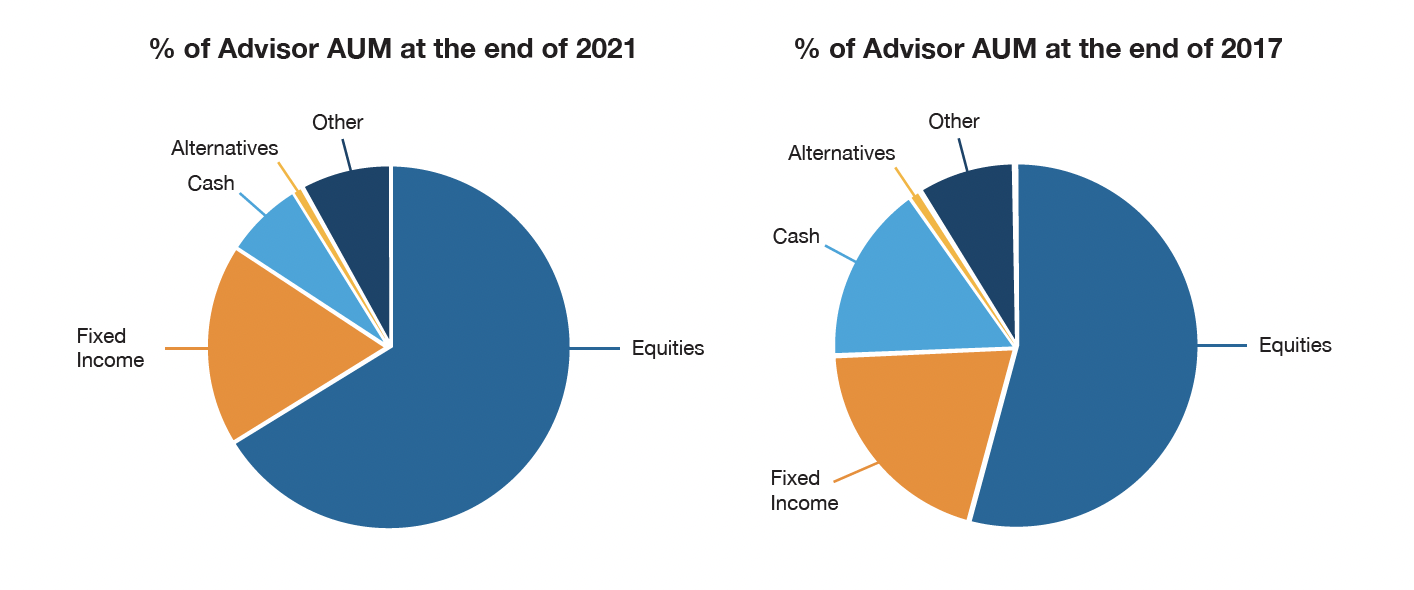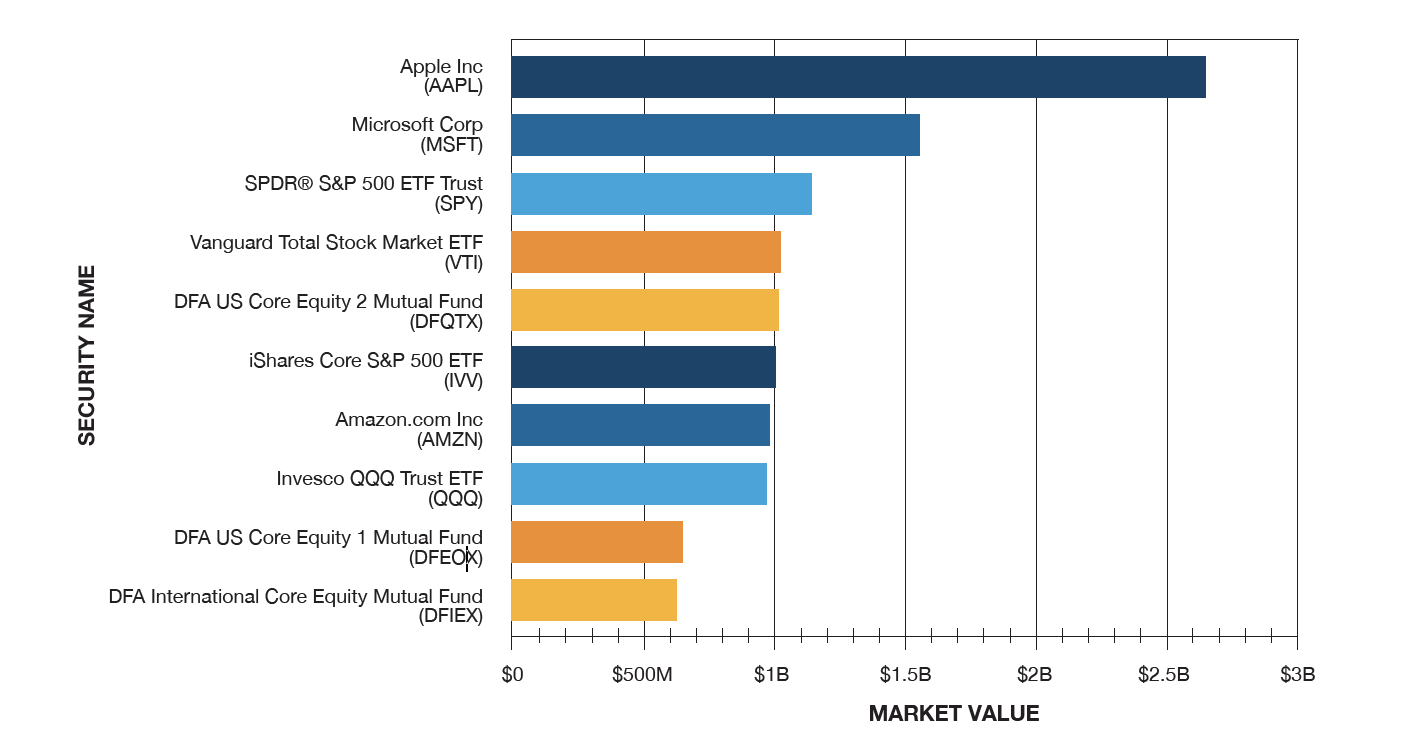We know it can be helpful for advisors to understand what their peers are doing, especially during periods of uncertainty. With a bear market here for both stocks and bonds, and a recession likely, we wanted to look at the trends in asset management that got us here. So, we pulled data on how the roughly 1,100 firms working with Advyzon are allocating client assets going back several years.
The full white paper shows allocations for each of the past five yearends as well as analysis. For the purpose of this article, we’ll hit the high-level points and look at holdings at the end of 2021 and 2017 as bookends. Beyond broad asset classes, we’ll look at a few of the more specific holdings and some trends we’re watching as we wrap up 2022—things we expect to see in next year’s data.
For a comprehensive look at our data, download the full report.
Is the 60/40 portfolio dead?
It’s the question asset managers have been asking since the financial crisis. And while our data doesn’t show that it’s dead, it’s also not getting used.
At the end of 2021, advisors had more than 66% of their assets under management in equities and just 18% in fixed income. The remainder was distributed across cash, alternatives, and other investments (“other” refers to any investment that isn’t classified by Morningstar and doesn’t slate into an easily identifiable category, such as a blended fund.)
We weren’t any closer to a 60/40 balance four years prior, at the end of 2017. At that point, advisors had roughly 54% of their assets under management in equities and about 20% in fixed income.
According to Advyzon Investment Management Chief Investment Officer Brian Huckstep, this shift makes sense given the evolution of investor sentiment. Prior to the Financial Crisis, he points out, the most popular portfolio comprised an 80% equity allocation. Following the crisis, that dropped to 60%. “As time goes by, and danger seems to pass,” Huckstep says, “Investors slowly become less risk averse, and we see dollars progressively move back into equity-centric portfolios. This fits perfectly with the Advyzon results where we see Equity AUM generally increasing from 2017 to 2020.”
An AAPL a day
When we drilled down past broad asset classes, we noticed some interesting trends in holdings and products. For instance, mutual funds remain more popular than ETFs, but by a small margin that may not last when we look at 2022’s data.
Per Huckstep, “I expect that our database will show mutual fund and ETF exposures close to parity at the end of 2022,” thanks to low fees for passively managed funds. “That said, I believe high quality active mutual funds still have a place in client portfolios.”
That’s especially true, Huckstep points out, for alternatives or asset classes that are less understood by advisors and may justify active management fees that generate real alpha.
Despite mutual funds being the most popular type of holding, if we look at specific securities, Apple dwarfs even the most popular mutual funds and ETFs. Advisors held more than $2.5 billion in Apple stock on behalf of clients at the end of 2021. Microsoft came in second, with just over $1.5 billion. Broad equity index ETFs and mutual funds essentially filled out the remaining top 10 spots, with the exception of Amazon, which was the sixth most popular holding.
Finally, one trend-worthy note to point out. While cryptocurrencies have been a major focus of media coverage and client questions, they have yet to become a major holding across client portfolios. The cryptocurrency holdings tracked by Advyzon, via our OnRamp partnership and separately held accounts linked to our reporting, made up just under a basis point of total assets under management.
For more specifics, including how equity holdings are distributed across international and domestic, large cap and small cap, and totals over the years, download the full white paper. (Advyzon users can access the full report via the Knowledge Center.)




